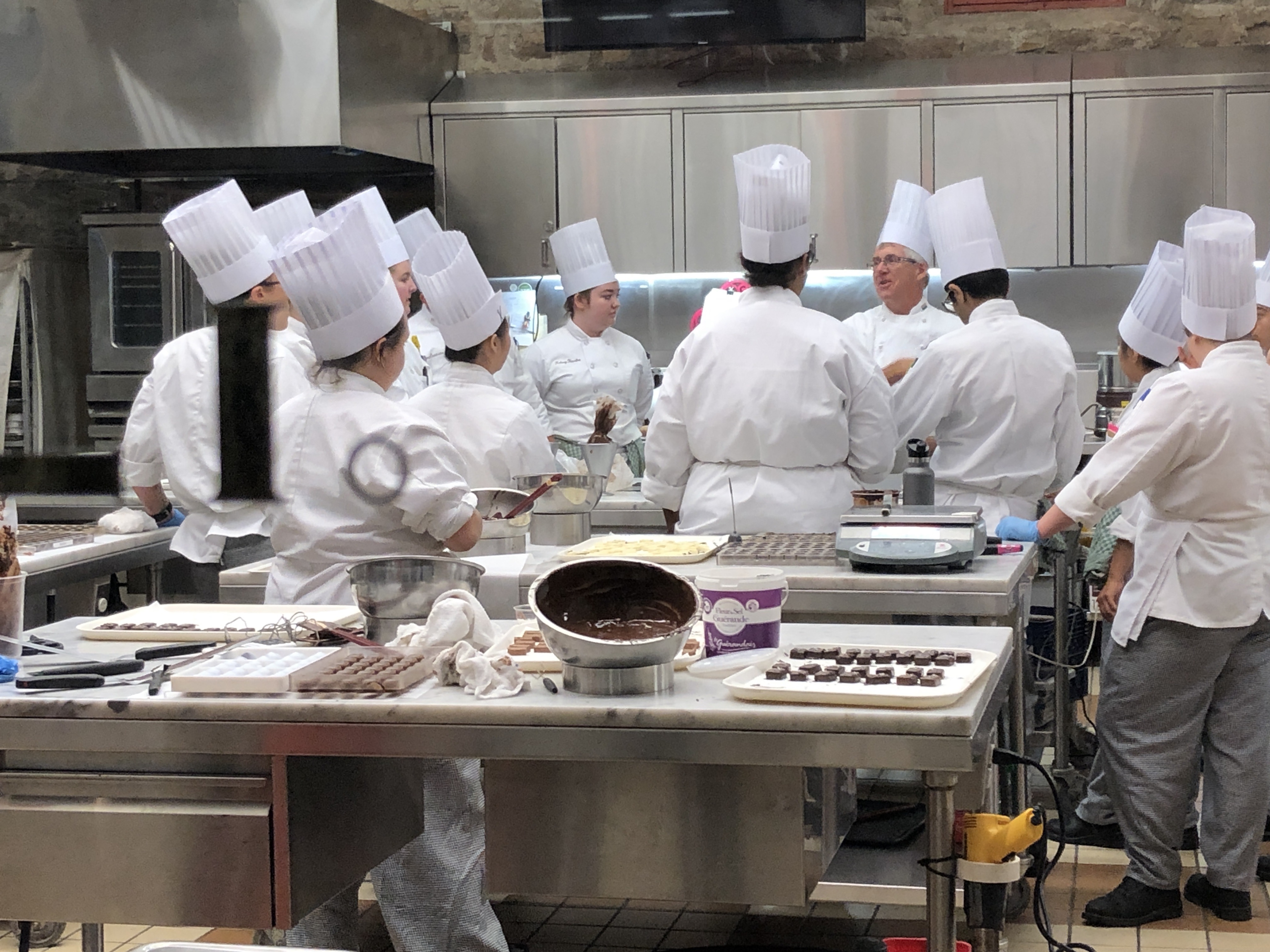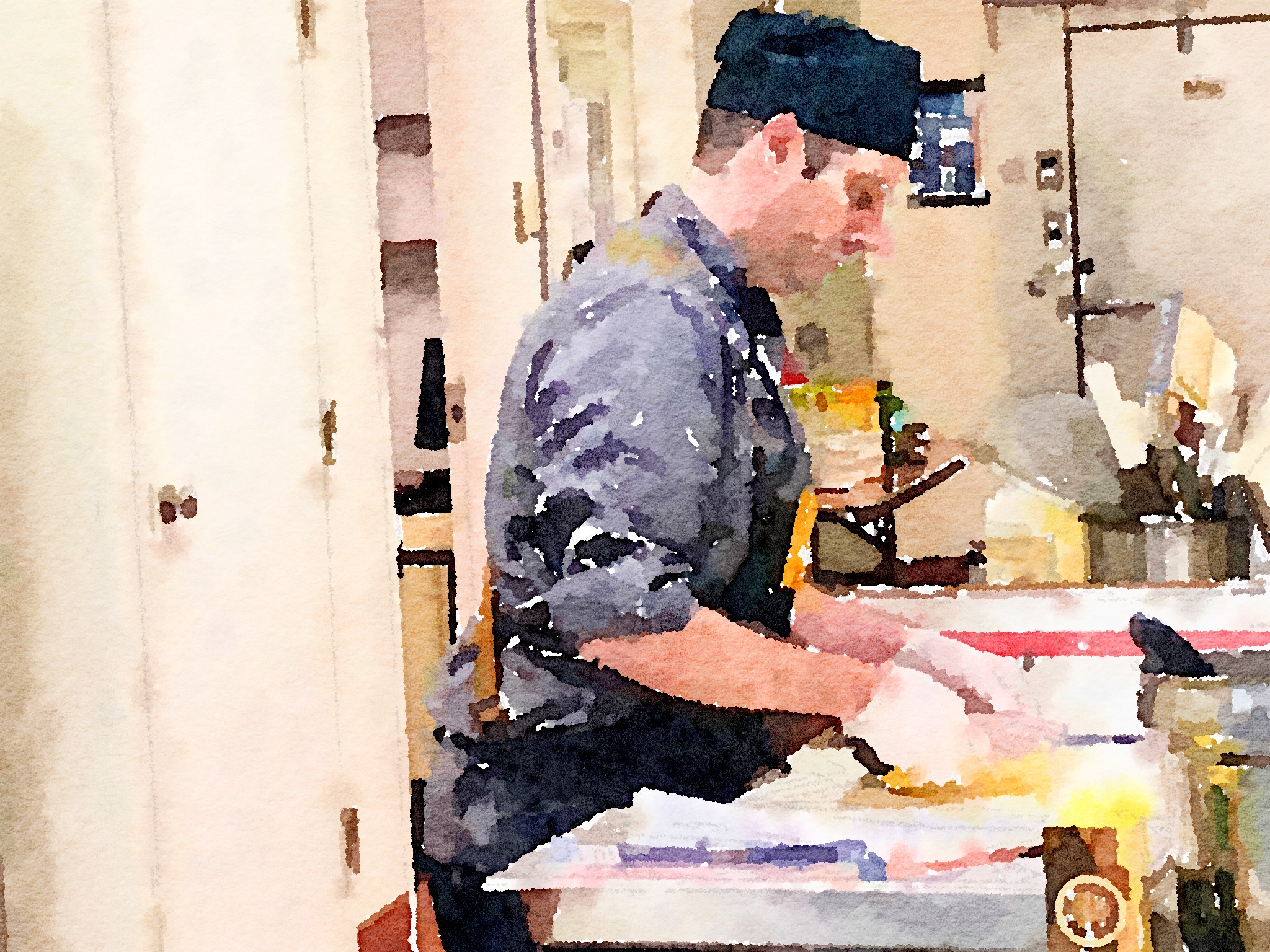
I have been privileged to work in kitchens all my life as a prep cook, line cook, and chef. I have built a reasonable set of technical skills along the way, and have learned – through trial and error, how to become a better than average chef and manager of kitchen operations. Over the past few decades I have also been able to observe cooks and chefs from all walks of life, from every type of restaurant, and from every level of passion for the craft. Through these observations I have come to the conclusion that there is just as much among these individuals that is common as is different.
We all wear a uniform of some sort, even though the level of respect for its history and importance vary greatly; we all click our tongs on the line in anticipation of the next order ticking off the POS, we all hold our basting spoons between our thumb and forefinger, all shift our weight from foot to foot so that we are ready to jump into action, and all paint on a canvas using similar brushes. To a large degree, we even work with many of the same ingredients. What differs is how we apply our craft, how we handle those brushes, and how we approach that canvas with an idea, a feeling, a commitment, and a level of confidence.
Some of us are more industrial painters who learn through practice where to place the brush on the canvas, what ingredient to paint with, and how to move that brush from point “A” to point “B”. There is a real need for this in a world where quantity and consistency rule. If you are honest as a cook you will admit that this type of cook is fascinating and inspirational at a certain level. Their ability to apply their skill towards incredible quantity and do so with an eye on doing it the same – every time, is remarkable.
Some of us are apprentice painters who have terrific foundational skills and are able to copy a well-known painters work with incredible authenticity. Once we are shown how, and have a model to replicate, we are able to follow the recipe for a work of art and do it justice. Walk through any art museum and you are likely to see numerous replicas of famous works of art that never carry the name of the one who had the skills to copy, just like in many restaurants we find incredibly competent cooks who never share the limelight with a chef, but are able to duplicate his or her style with relative ease.
And some are cooks and chefs who take the skills that have been developed over years and apply inspiration, vision, and even a bit of chaos to a canvas and create something that is totally unique – a benchmark for others to follow. In all cases we shift our weight from foot to foot, click our tongs, paint with the same brushes, and hold that basting spoon between our thumb and forefinger. We are the same, yet we are much different.

When we think of our selves in the context of being the same, we can reflect on how we easily step out of our stylistic roles and marvel at what each is capable of doing. Honest cooks and chefs will tell you how much they appreciate and respect the cook who makes an incredible bowl of clam chowder in a little shack on the coast of Maine; love to order a bag or roasted chestnuts from a street vendor in New York City, smile when sat in front of a plate of hot beignets and chicory coffee at Café du Monde in New Orleans, and relish that roast beef and horseradish on weck from a Buffalo, New York sandwich shop. At the same time, they may very well be a protégé of Ferran Adria working on a culinary invention that takes everyone out of their comfort zone, or super serious about perfection with the classics as a cook, sous chef, or chef at one of Chicago’s cutting edge fine dining operations. We all shift our weight from foot to foot, click our tongs in anticipation, paint on a canvas with the same brushes, and hold a basting spoon between our thumb and forefinger.
We are all the same, yet all so different. With our tools in hand some cooks and chefs may paint on their canvas like the Impressionist Painters – Van Gogh, Pissarro, or Monet – using subdued colors, but keeping to a recognizable interpretation of historical food preparations. Others may throw caution to the wind and paint with reckless abandon like Pollack, Picasso, or Matisse – not quite knowing where the food interpretation will end up, but feeling free to put a unique signature on the plate. And others may be content to present their food with great realism as Norman Rockwell might if he had been a chef. In all cases we shift from foot to foot, click our tongs, and use the same brushes to paint on our plates.

The longer I am away from the every day job of the chef in a kitchen, the more I am able to reflect and relish the observations and memories of those times when the industrial painter was needed, when the traditionalist was called for, and when the opportunities to be carefree and creative presented itself. I have immense appreciation for all cooks who are simply dedicated to what they do. If they are committed, if they work at building their skills, if they are pleased but understanding that they need to improve their work, and if they make guests happy then they should be proud. If they are all of these things, then we (all cooks) should be proud of them as part of our family.
When I see a cook in a clean uniform taking a quick break from his or her work – I feel his or her condition and appreciate whom they are. When I see a chef who is visibly exhausted from another 15-hour day of relentless demands – I am with him or her – I feel their condition. When I enjoy that cup of chowder from a clam shack on the coast of Maine, or experience a beautiful, meticulously prepared three-course dinner at a high end operation – I am proud of those who work their tail off in the kitchen to make that meal happen. I know that in those kitchens there are dedicated people who shift from foot to foot, click their tongs between a rush of orders, hold their basting spoons between thumb and forefinger, fold their side towels a certain way, and use the same brushes in different ways to paint on their canvas.
I am, however, disappointed in those who fail to appreciate other cooks for the role they play and the food they present on their canvas; I am disappointed in those people who call themselves cooks who fail to appreciate what is before them and choose not to build the skills and approach their given canvas with passion and respect, and I am disappointed with those who choose to view what cooks and chefs do as somehow less than professional, less than noteworthy, and less than worthy of their respect.
Whenever I see a cook or a chef I make it a point to give them a thumbs up and offer a word of thanks and encouragement. Whenever I see a cook or chef who fails to embrace the opportunity that they have to be professional and worthy of respect from our family – I can only shake my head. We are all the same, yet still so different.
PLAN BETTER – TRAIN HARDER
Harvest America Ventures, LLC
Restaurant Consulting

Leave a comment